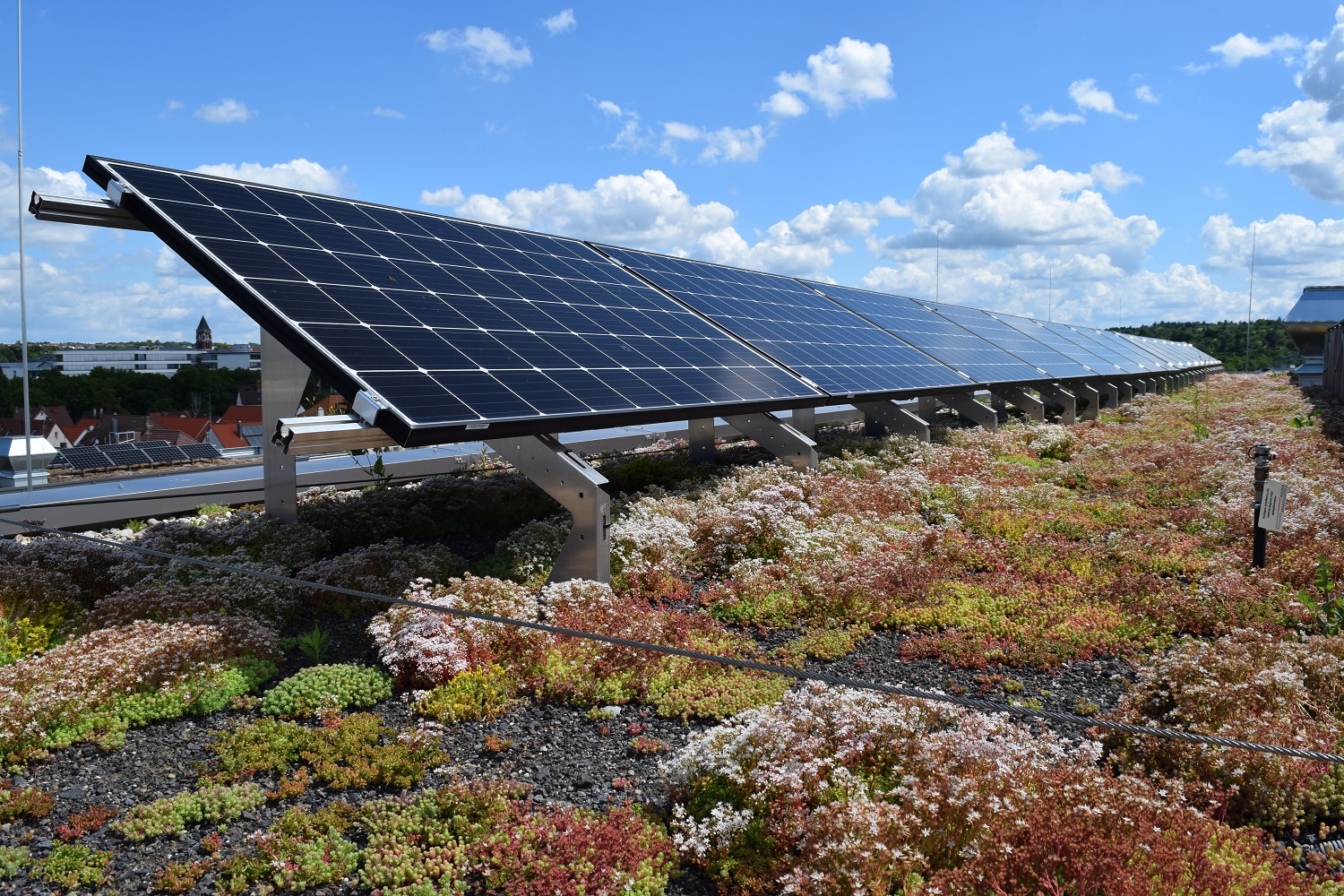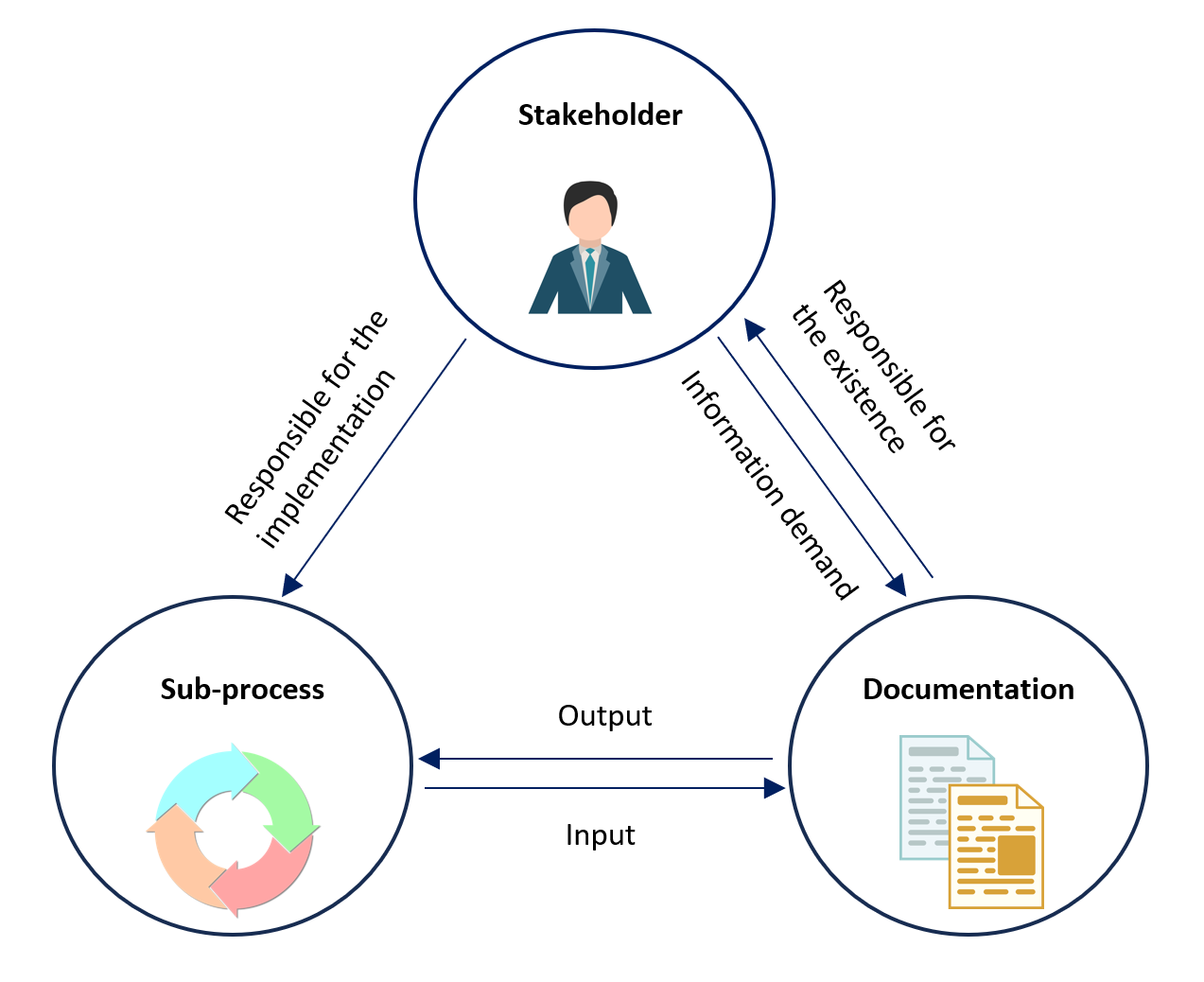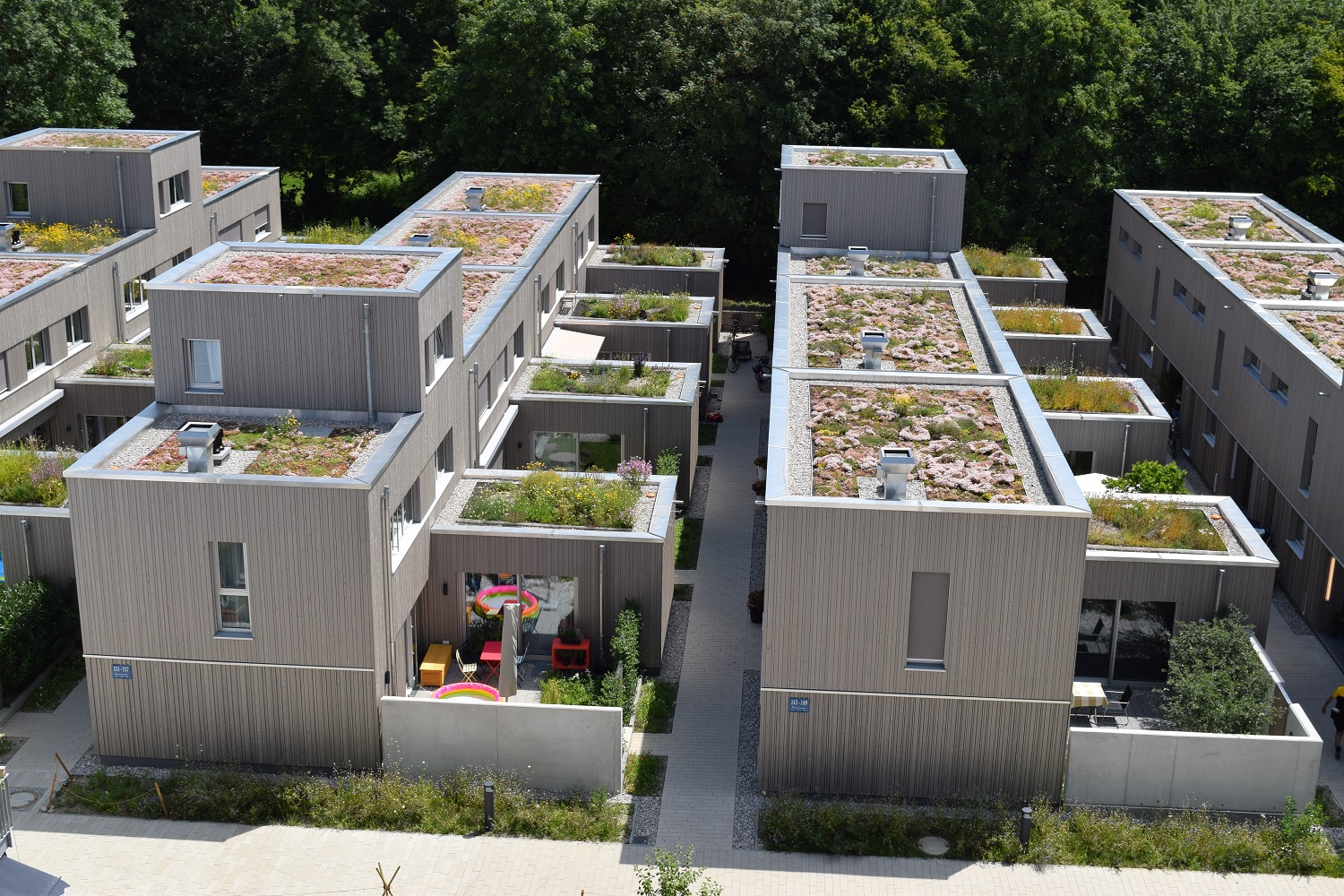he combination of green roofs and photovoltaics (green-roof PV) offers both ecological and economic benefits. Green roofs serve as natural insulation and contribute to improving the climate in towns and cities by lowering temperatures in urban areas, reducing energy consumption, and improving air quality. They also promote biodiversity, provide habitats for plants and animals, and reduce rainwater runoff.
PV modules on green roofs efficiently utilize existing space and offer additional benefits. The combination of green roofs and PV not only enhances ecological sustainability but also opens up economic opportunities. Photovoltaic electricity generation helps to reduce CO2 emissions and allows building owners to generate their own electricity and reduce energy costs. Our work focuses on urban climate modeling, economic evaluation of green roofs and green-roof PV, yield prediction, monitoring of PV-specific and biological Key Performance Indicators (KPIs), and life cycle assessment (LCA).
Our R&D Services on the Topic »Green-Roof Photovoltaics« Include:
- Techno-Economic Evaluation of Green Roofs and Green-Roof PV
- Simulation, Yield Assessment, and Monitoring of PV Green-Roof Systems
- CFD Wind Simulation Coupled with Thermal and Mechanical FEM Simulations
- Planning Support for Green-Roof PV
- Expert Opinions and Consulting on Mandatory Green-Roof Requirements





